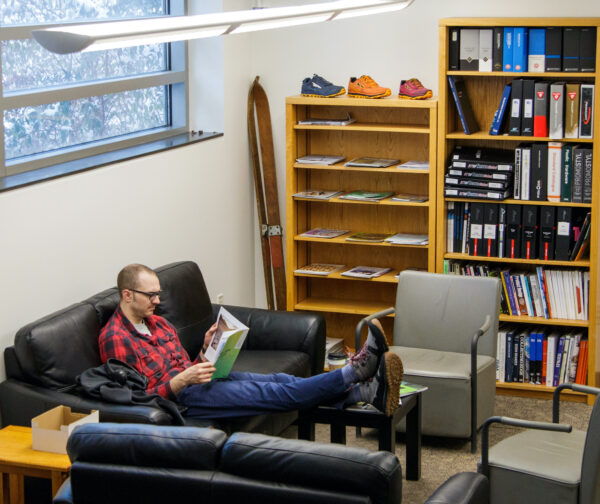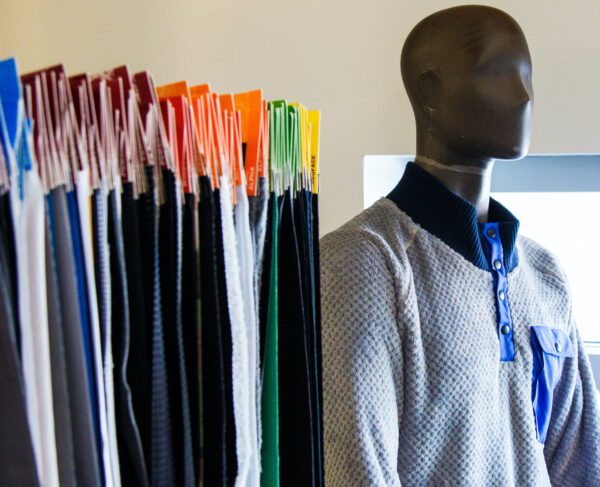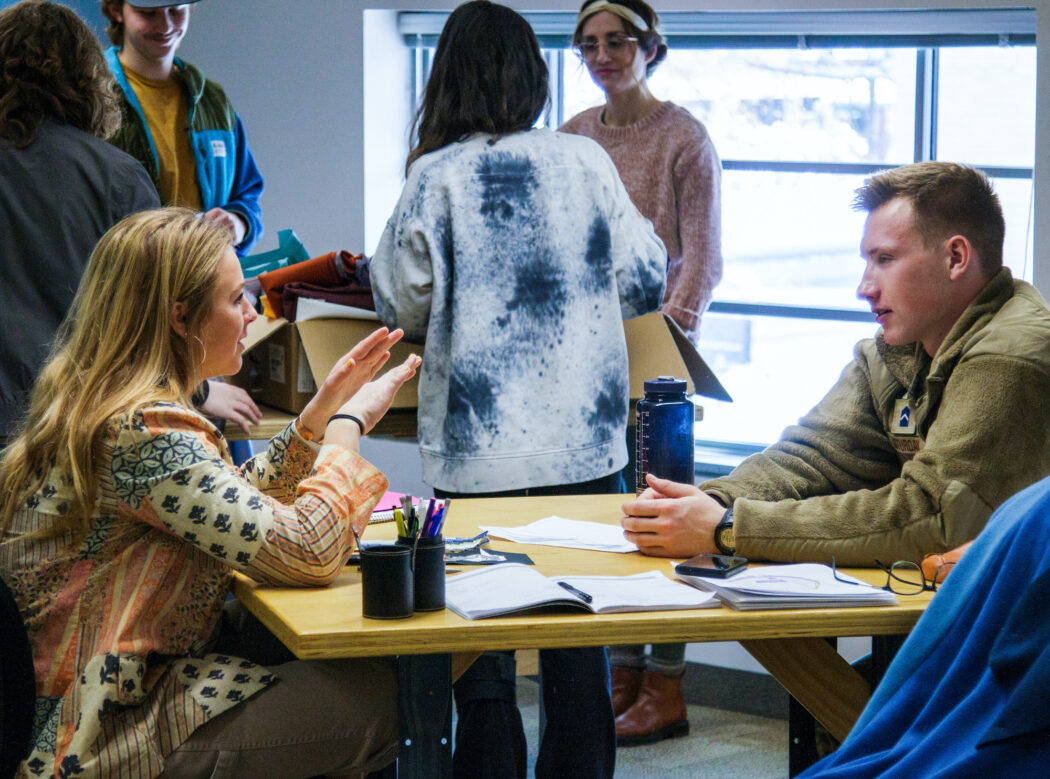Space to grow: Outdoor Product Design & Development in new building
Utah State University’s Outdoor Product Design and Development program has moved into the Janet Quinney Lawson building, officially claiming a designated space on the Logan campus.
Prior to the program’s move in December, OPDD workspace was primarily in the Industrial Science building, and faculty were spread across campus.
The JQL building became vacant when Information Technology services moved into a brand new building. USU’s Space Committee decided OPDD has seen fast growth and demonstrated significant need for the building.
OPDD classes will be held in the building beginning fall 2023. Chase Anderson, the program coordinator, said it is unique for a program to have all faculty under the same roof as student study areas.
Organization of the new space is still in progress, but all faculty are moved into the offices and students already use it as a hub.
There are open study areas, a design and material library for inspiration, a future classroom, space to showcase projects, a future textile lab and space for student lab technicians to work. OPDD worked with USU Facilities and the Inclusion Center to convert the bathrooms to all-gender restrooms, which Anderson said was a priority for the program to be more inclusive.

A person reads a magazine in a lounge area at the Janet Quinney Lawson building on Feb. 22. (Photo/Sam Warner)
There are still OPDD labs in the Industrial Science building and the Veterinary Science & Biology building. However, all of the program spaces are now on the same street.
Jakob Meighen, a senior in the program, said before the new building, there wasn’t a community within the program.
“Not having a space that everyone can come to was definitely a bit frustrating and didn’t nourish the community aspect,” Meighen said. “Now having this, I have met way more people than I have in my past three years here, which has been really awesome. It is a great space to work in too, and having all the professors right here has been awesome.”
Julie Lamarra, an assistant professor of practice, said students have already put together study groups that meet in the building, even on days without class.
“It feels really organic, and it feels really natural, it feels unforced,” Lamarra said. “The students are just here and building that community organically, as your professors are working through the day. It has been really, really refreshing to see, and inspiring.”
Anderson said the faculty also see each other and talk more, which improves teaching and the program in general.
“We have had a lot of students who are hungry to be around other students and learn what they are doing,” Anderson said. “Before, it felt very much that it was you and your cohort of students. There was very little crossover between the classes. Now, students are bumping into each other; they are having those study groups. You are getting juniors interacting with freshmen, which creates opportunities for mentorship. It is exciting.”
Lamarra said the professors have an open door policy, which has created a collaborative space for faculty and students.
“We not only have an open door policy for our students, but really for anybody that’s curious about the program,” Lamarra said. “We love talking about it. We invite everyone to come and check it out and to see what we have going on here — ask questions and be curious.”
 GARY GRANT
GARY GRANT A mannequin sits next to fabric samples in the Janet Quinney Lawson building. (Photo/Sam Warner)

